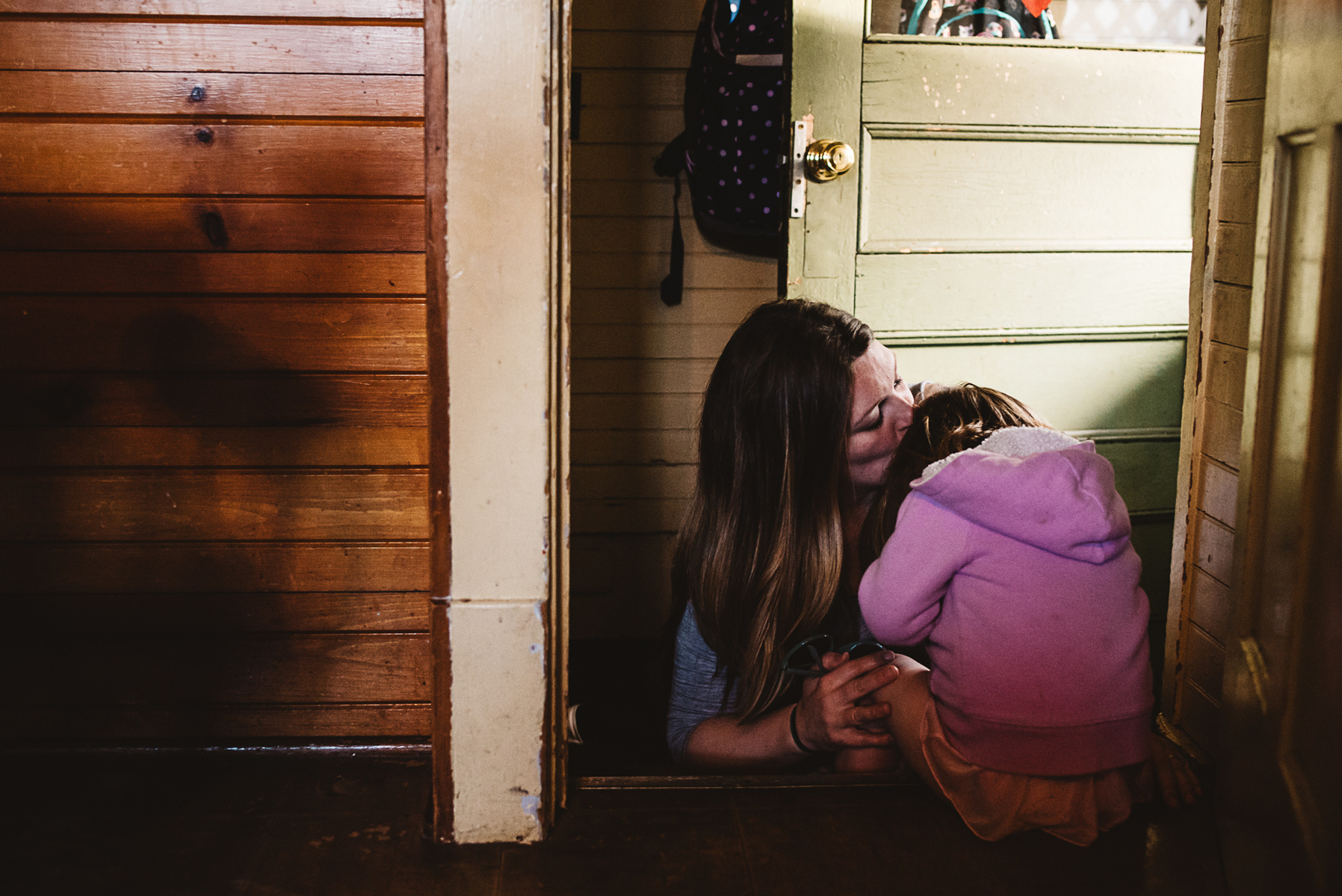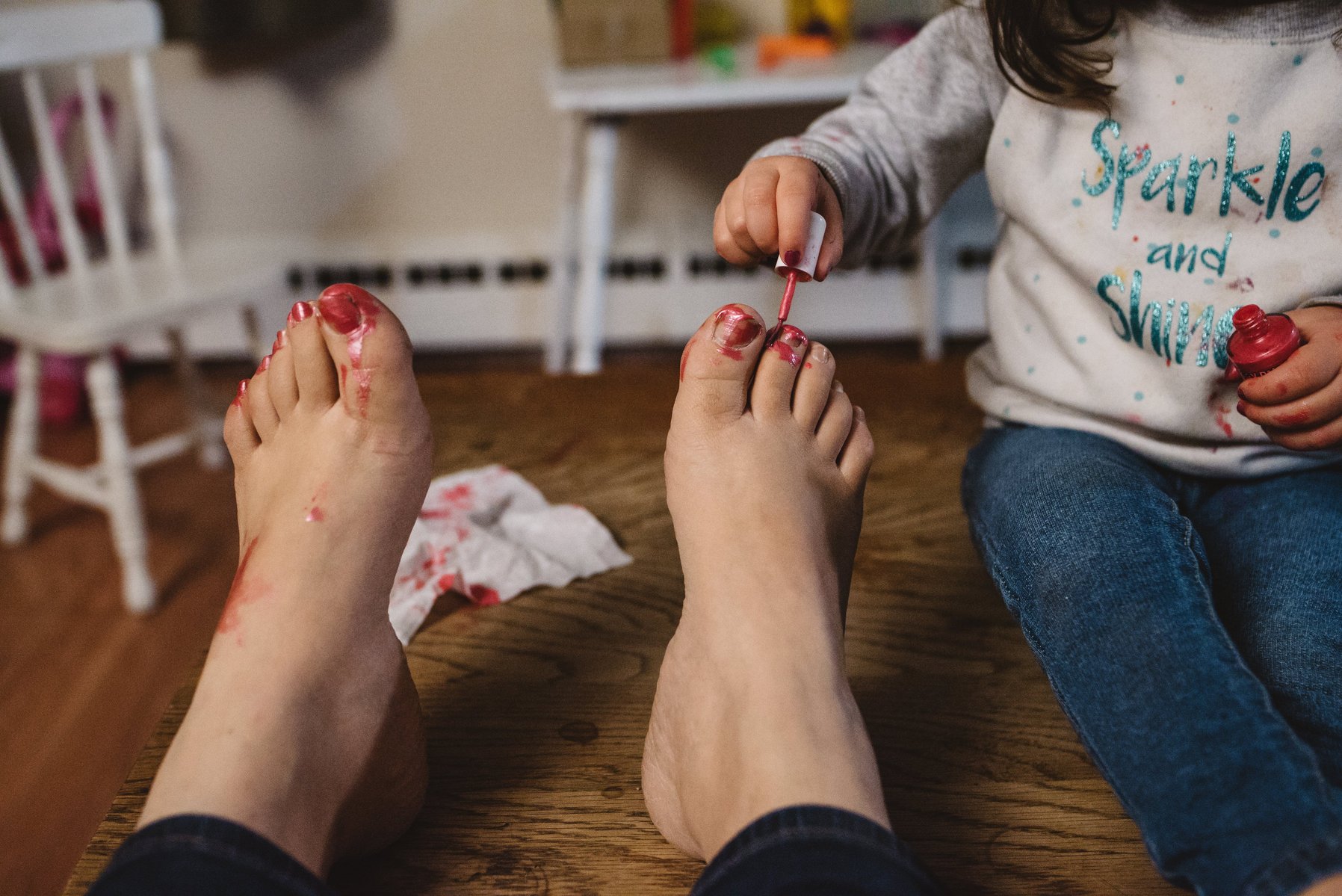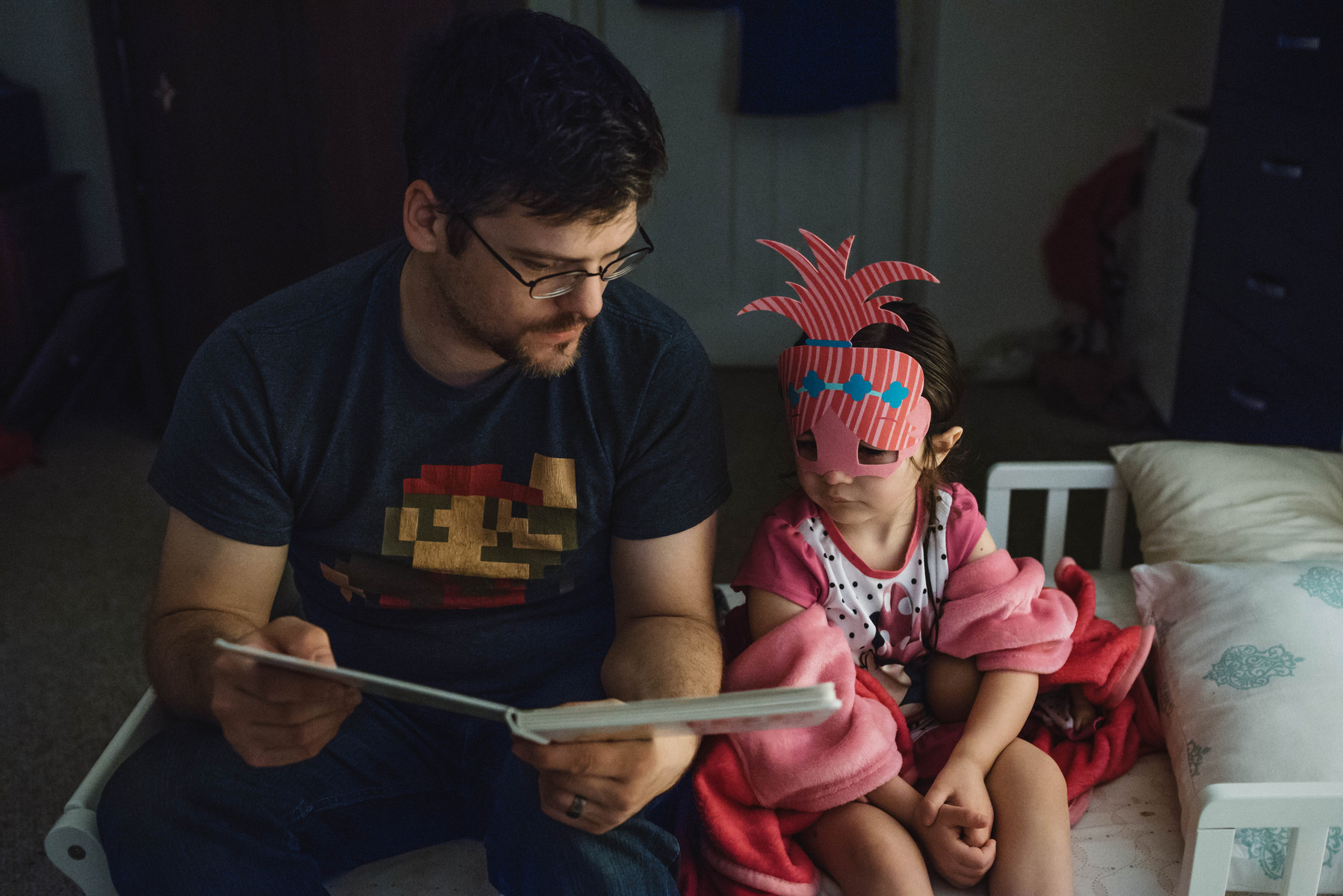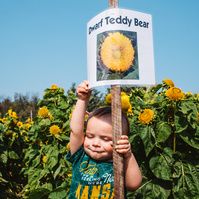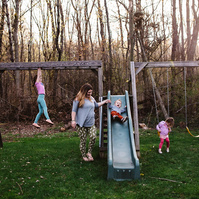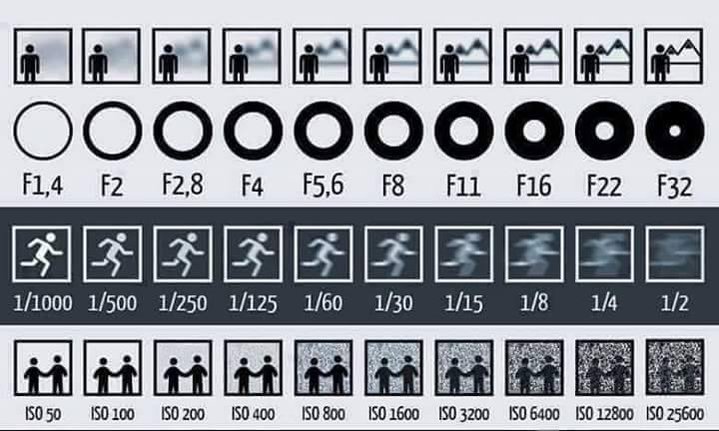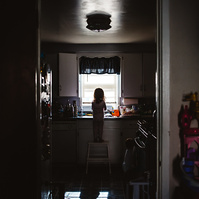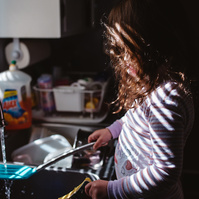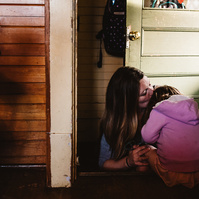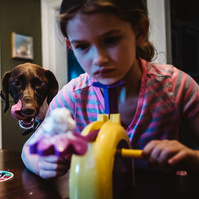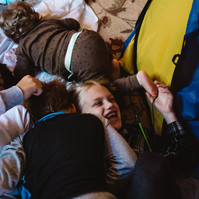As Valentine’s Day draws closer, I have been thinking a lot about love and how my definition of love has changed over time. In my younger days (the dating and young love era) love was something celebrated with a night out on the town, flowers, and maybe a gift or two; love looked like something straight out of a Nicholas Sparks movie. However, as I have grown I realize love doesn’t always look like that—it’s not always TV ready and it’s certainly not always attractive.
Yesterday, while we were giving our kids a bath, my son (bless his adorable little heart), decided to poop in the tub. While I was trying to get the kids out of the tub, rinsed off, and ready for bed, my husband sprung into action to clean up the poop mess left in our tub. That, my friends, is what love looks like nowadays. It’s a lot different from the chocolate and flowers I was used to receiving.
Love is cleaning up poop in the bathtub when you know your S.O. might throw up at the sight of it.
Love is getting your nails painted by a three-year-old who has no intention of keeping the paint on your toenails. Side note: Love is being a dad with pink toenails, forgetting to remove it, and only realizing this fact after taking your socks off for a parent-and-me gymnastics class (my husband can really rock pink toenails).
Love is tag teaming all-nighters with a newborn and having coffee ready for when it’s time to tackle the next day.
Love is wearing the same clothes you wore yesterday, being covered in toddler snot and baby spit up, and still being told you are the most beautiful person in the world.
Love is settling for date nights at home when the kids are asleep and just enjoying each other’s company. It’s stolen glances throughout the day and kisses in between diaper changes.
Love is encouraging creativity, potty training, accidents, kissing boo-boos, and reading the same book or watching the same movie for the bagillionth time. It’s relinquishing a little bit of control and letting your child make mistakes (and maybe letting them cook dinner knowing the mess that will soon follow).
Real Love is sharing life with someone. It’s not always perfect and it doesn’t always
involve perfectly pressed outfits, golden light, and perfectly brushed hair. It’s messy, chaotic, and full of surprises—it’s perfectly imperfect and so much
better than chocolate and flowers.
This Valentine’s Day let me help you celebrate your everyday love with
a family storytelling session.
For $200.00, you’ll receive a 2-hour storytelling session to gift to your loved one, which can be claimed anytime between now and June 2018.
In addition, you will also receive 5 digital downloads from our session time (artist’s choice).
Afterwards, you’ll get the opportunity to purchase what you love from an a la carte menu of prints, products, and collections—a stunning way to celebrate your family’s love story, every day.
*Fine Print: This story session voucher can be used to book a family session, an in-home newborn session, or a fresh 48 story. As well, the value can be applied toward a longer 4-hour Day in the Life storytelling session. The session can either be in your home or at a favorite location of your choice (or a combination of both).
All sessions are unposed and documentary in nature—they’re intended to capture real life. Check out my family gallery or blog if you aren’t currently familiar with my work.
Sessions are for immediate family only, must be booked by February 28, 2018, and take place by the end of June 2018 to take advantage of this promotion.
For the last few months, I have been working on a personal photo project which documents the reality of breastfeeding. As I continue to photograph moms I realize there are several more images that are lacking from the project. So therefore, I am reopening my model call for the project.
I am looking for several moms in the Western New York Area who would be interested allowing me to document their breastfeeding journey. This would be a long-term project and would involve at least a day commitment (with the possibility of more) and open lines of communication throughout the year. The goal of this project would be to shed some light on the realities of breastfeeding, help inspire other breastfeeding mamas, normalize breastfeeding, and most of all, let moms know they are not alone in their struggles.
Breastfeeding is hard and it’s not always glamorous, but it’s also pretty damn beautiful. That is what I want to focus on.
I am looking for moms who fit one of the following categories:
- A breastmilk donor
- An exclusively pumping mom
- A tandem nursing mom
- An adoptive mom who has induced or will induce lactation
- A mom with cancer or who is about to undergo surgery that is still breastfeeding or planning on breastfeeding in the hospital
- A mom that is nursing a child through an illness (not the common cold or flu)
- A mom nursing her hospitalized infant or child
- An extended breastfeeding mom (child over 4)
If you would like to participate in this ongoing project, please fill out the questionnaire by clicking here. I can’t wait to chat with you!
All applications will be reviewed and families will be contacted if selected. Those selected will receive 10 high-res images suitable for printing up to 11 x17 as a thank you.
If you have any questions regarding this model call or feel I am lacking anything from the current model call list, please don’t hesitate to contact me.
*Must be willing to sign a model release as these images will be used for my portfolio, a possible photo book, and advertising purposes.
In a previous post, we briefly discussed how the way light is handled by a photographer can have a direct outcome of whether a photograph is ultimately ‘good’ or ‘bad’. Though the misconception is that the quality of images directly correlate to the type of camera used, it is light that plays a significant role. Even a well-lit subject can be captured poorly if there isn’t a proper understanding of light and how to capture it.
When a camera takes a photo, the camera opens its shutter and allows light in through the lens and into the sensor which is then made into an image. There are three settings on your camera which will help you to determine how much light you want to let in. These settings are: Aperture, Shutter Speed, and ISO— also known as the exposure
triangle. Note: all three settings work together, so modifying one will mean you have to modify another in the opposite direction.
Before we go any further, I want to define the term exposure. Exposure is referring to the brightness or darkness of a photo—when we refer to an image as overexposed, we are saying the image is too bright (too much light was let into the camera’s sensor) and when we refer to an image as underexposed, it is describing the image as too dark (not enough light was let into our camera’s sensor).
Photography is all about controlling and capturing light. Most beginners think the magic of photography happens in the body of a camera, but the true source is light. A well-lit subject can still be captured poorly; light is everything.
Let’s go into a bit more detail on each of these settings:
Aperture: This is the size of the lens opening and they are often displayed in the form of f/8, f/5.6, etc. The smaller the number, the bigger the lens opening (or wider the aperture) and the more light is let into
your camera. In addition, aperture also effects depth of field (which will affect how much of your images is in focus).
Shutter Speed: This is how long the shutter is left open and are often displayed in the from of 1/60, 1/250, etc. The slower the shutter speed, the more light is let in. Shutter speed also affects you’re camera’s sensitivity and ability to stop motion. The slower your shutter speed, the more motion blur your image will have.
ISO: Your ISO is how sensitive your camera sensor is to light and is often display in the form of ISO 200, ISO 1600, etc. Higher ISOs will allow you to take photos in darker situations. Note: the higher the ISO more the noise or ‘grain’ your image will have.
In addition to determining the amount of light allowed on your camera’s sensor, these settings also control different photographic criteria as well and need to be taken into consideration before making any final artistic decisions. Aperture changes the depth of field, shutter speed stops motion or can introduce motion blur, and ISO modifies the noise levels of your images.
Now the exposure triangle is important to understand to help you take the photos you envision. It is an in-depth topic which we will dive more deeply as time moves on, but before we do it is important to understand the basics.
For a visual representation of how these three settings interact with one another, check out this website: http://photography-mapped.com/interact.html. Or check out the image below from lifehack.org. Either one will help you to visually see the changes the choices you make with these three settings will have on your exposure.
In a world with smartphones armed with incredible cameras, we are inundated with photographs daily. With some form of camera on our person always, it’s no wonder current generations are being touted as the “most documented”. This over-saturation of daily photos on our social media timelines and cellphones have lead to photographic ‘indifference’ and have seemingly lowered the bar on our definition of what a ‘good’ or ‘great’ photograph really is?
So what makes a photograph ‘good’ or ‘bad’? While photography can be very subjective in nature, is a common trait ‘good’ photos possess and that is: it elicits an emotional response from the viewer. Now, this emotional response doesn’t always have to be a positive one; it can incite anger or sadness as well. The important thing to note is if the photo made you feel something. While this definition of a good photograph can often open itself up to interpretation, how it is accomplished is, I believe, rooted in the technical aspects of photography.
Truly great photographs not only elicit an emotional response from the viewer, but they also focus on key factors: light (the word ‘photography”s Greek roots literally mean drawing with light), focus, composition, subject matter (simply put: moment)—‘good’ photos contain at least two of these items, ‘great’ photos will contain them all.
Light:
Light and how you treat it is essential to a good photograph. It can affect how the view perceives the overall mood and message of the image.
Focus:
Focus is one of those items which cannot be downplayed. A technically sound image will be in focus (unless the photographer has purposely placed the image out of focus, which should be apparent). An image with no clear item in focus can leave the viewer confused as to what they are supposed to be looking at.
Composition:
Strong composition allows the photographer to draw the viewer directly to what they want them to see. How you compose an image can change the overall story being told.
Subject Matter (or Moment):
The subject matter doesn’t have to be over-the-top to be strong; there can be strong subject matter in even the quietest of moments. The presence or absence of a strong subject can make (or break) a photo. Note: Sometimes if the subject matter is strong enough, it can trump any other technical imperfections the image may include.
Even though we are surrounded by imagery each day, it’s important to appreciate the standout photos—the ones which elicit an emotional response within us, the viewer, in addition possessing what is required of a technically sound photograph.
Not long ago, Trish and I started talking about putting together a newborn promo video
to show clients what it’s like to work with her. By now, I’m sure you know I am all about storytelling, whether it is through pictures or video, so I was more than happy to jump at the chance to tell her brand’s story.
When I went to her studio a few weeks ago, I was able to video her in action with the
sweetest little girl. Trish was warm and tender. Watching her work, you could see why any baby would instantly feel safe with her. As I’m sure you could see from the video, she is apparently covered in sleepy dust and literally has a magic touch. (I just wish I could have stolen some magic sleepy dust to bring back home to my kids, but I digress ☹)
In case you haven’t seen her work, know that her newborn portraiture is incredible.
Her work has a very soft, simple, earthy feel which will transcend time. This video
was really a labor of love for the both of us and I am so excited for how it turned
out. You can view the finished video below.
Thank you, Trish. It was so fun to work with you ❤
You can check out some of Trish’s work here: www.lulubellephotography.net

